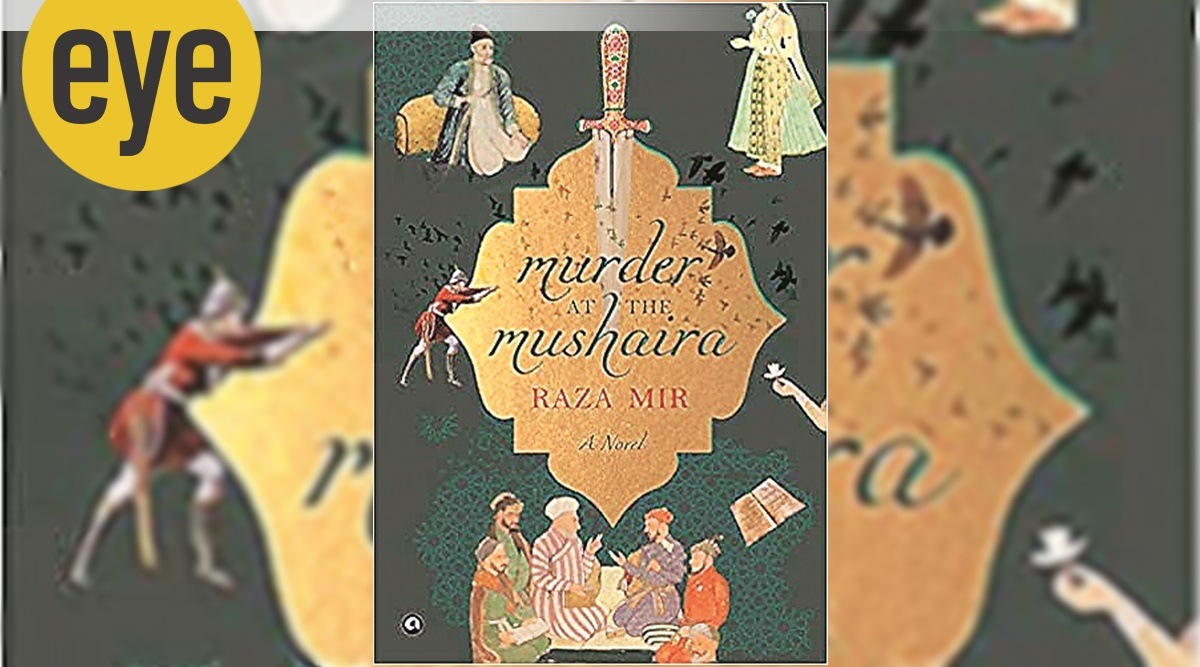
On a dark night in May 1857, a solitary man on horseback makes his way towards Shahjahanabad. Unrest had been fomenting in the countryside, bitter resentment spilling over from years of humiliation and abuse by the British, who had, since an obscure battle in Plassey, come to control greater parts of the country. Sarfaraz Laskar, the rider, knew that the time was ripe to flame that seething animosity into a full-blown rebellion — if he could make his way to the seat of the etiolated Mughal emperor Bahadur Shah Zafar, that is.
Despite the palpable air of fear, chaotic, simmering Shahjahanabad wears a festive air in the holy month of Ramzan. After the fasting through the day, evenings are kept aside for feasting and social gatherings, with the nobility organising mushairas that host the finest poets of the land. One such mushaira at Nawab Iftikhar Hasan’s house ends in the murder of a poet — the dubious Sukhan Khairabadi, rumoured to be a British spy. With trouble brewing in the barracks over a newly-introduced greased cartridge, the death of an informer, especially one who had sent a message for an audience on a matter of utmost urgency, catches the attention of the Company agents.
The new naib-kotwal of the area, the young Kirorimal Chainsukh, is given a deadline and an ultimatum. With the British breathing down his neck, Chainsukh turns to an unusual ally — the poet laureate of the realm, “Mirza” Ghalib, composer of exquisite poetry and an amateur detective when a case piques his interest.
Together, they race against time, trying to solve a murder that holds the key to a larger, wholly audacious plan.
The year 1857 is a crucial landmark in Indian history. Once diminished by the colonial rulers as a revolt by disgruntled subordinates — it has, since, come to signify the first concerted Indian attempt at freedom from the Empire. Setting his narrative against this backdrop, Raza Mir weaves together a fictional account, a people’s version so to speak, of the events that led up to the moment of conflagration.
In doing so, Mir is working within the thriving genre of historical crime fiction, that delightful branch of mystery writing which reconstructs not just cases of murder and mayhem but also eras long gone. The publication of Madhulika Liddle’s Muzaffar Jang novels (between 2009 and 2015) gave the genre a fillip in Indian-English writing. Since then, several writers, most notably the US-based Sujata Massey with her Perveen Mistry series, and the UK-based writer Abir Mukherjee with his Wyndham and Banerjee books, have worked it to very satisfactory ends. Mir’s novel, though a standalone work, is a layered and gripping narrative.
The world Mir creates is one of great churn, poised at the cusp of momentous change. The once mighty Mughal empire is a shadow of its former self, its sovereign reduced to a figurehead, the peerage scrambling to protect their properties or financial interests, the farmer and the soldier both at the mercy of the increasing tyranny of Company officials. But beyond this roil, Mir’s Shahjahanabad embraces people of disparate tempers and interests, religions and stations and makes them its own. In its crowded alleys, a tavern stands next to a mosque; neighbours squabble but look out for each other and atheists and believers both marvel at science.
If Delhi is a character in itself, those who throng its streets and havelis — some historical, some fictitious — are equally powerful presences. While Ghalib, wise, witty and intuitive, (and so perfect a detective that one wonders why no one had thought of him before) holds the novel together, characters such as Ramachandra, the enigmatic Laskar who looms large over the novel’s landscape, the painter Hyderi Begum Zutshi, Kathak dancer Ratna Bai — the last three, women of wit and agency — propel much of the novel’s action.
Unlike a traditional murder mystery, in which the resolution restores order in society, here, it is only the beginning of a devastating, if heroic, end. Mir takes a familiar event in history to reimagine not just how it shaped the course of an era but also to show how one must always “rage at the dying of the light”, no matter the consequences.
- The Indian Express website has been rated GREEN for its credibility and trustworthiness by Newsguard, a global service that rates news sources for their journalistic standards.
 Continue with Facebook
Continue with Facebook Continue with Google
Continue with Google
